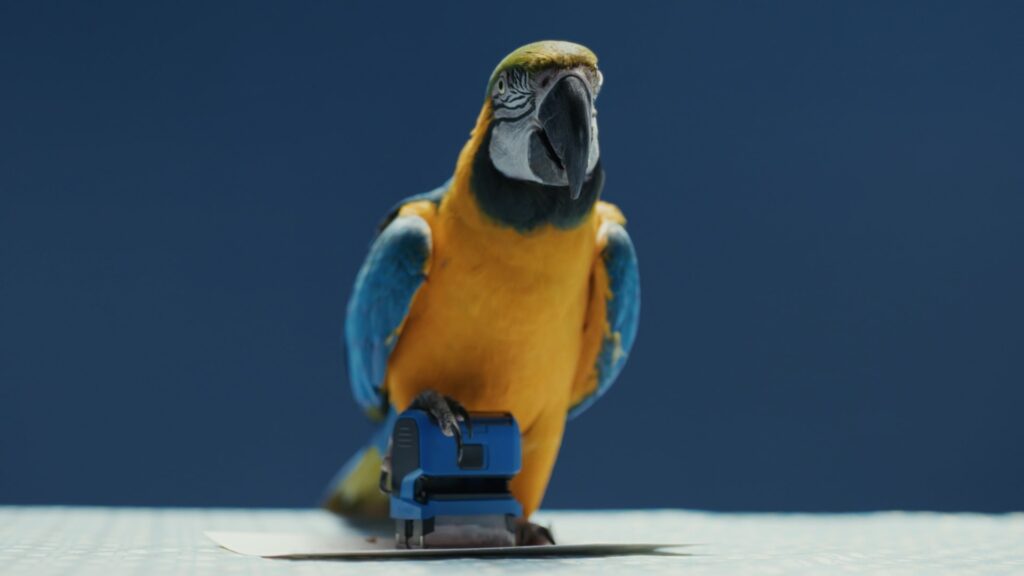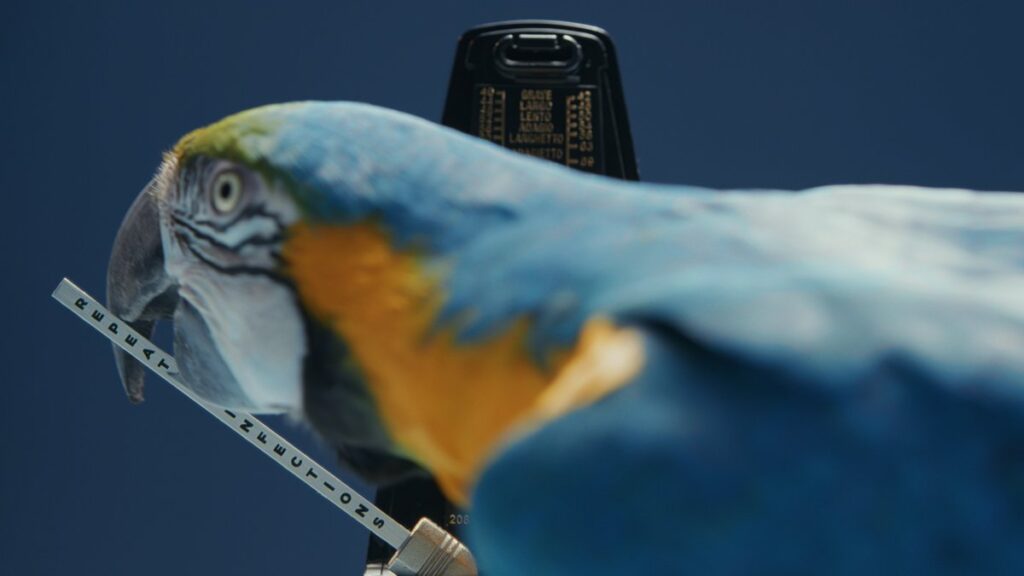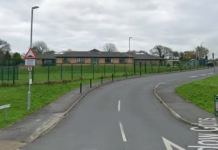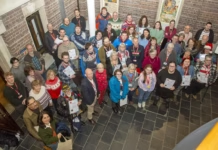Non-existent awareness of leukaemia symptoms “extremely worrying” – as new figures show people in Wales don’t know bleeding, bruising, fatigue and infections are a sign of the blood cancer
Leading UK leukaemia charities launch memorable new campaign to get people “parroting on” about the symptoms for Blood Cancer Awarness Month in September

People in Wales are being urged to take notice of the symptoms of leukaemia, as new research published today shows that only 1% of those surveyed in the region were able to identify ALL four of most widely reported symptoms[1] – fatigue, bruising, unusual bleeding and repeated infections.
Leukaemia is a form of blood cancer affects people of all ages and 28 people receive a leukaemia diagnosis every day in the UK – that’s over 10,000 every year. Overall survival for leukaemia stands at just over 50%[2] – making it one of the most deadly forms of cancer.

Early diagnosis could saves lives[3], yet the recent public survey by leukaemia charities Leukaemia UK and Leukaemia Care, found that over that over a third (34%) of respondents from Wales could not recognise ANY amongst the four most widely reported symptoms of the disease[4], which kills 5,000 people a year in the UK, and which is often diagnosed too late.
The two charities are collaborating on an important campaign, #SpotLeukaemia, to raise awareness of the symptoms ahead of Blood Cancer Awareness Month in September. Blood cancer is the fifth most common cancer and third deadliest.
In a new film released today Leukaemia Care and Leukaemia UK have called on the expertise of ‘Henry’, a talented Macaw parrot, to try to make the symptoms of leukaemia memorable. The ad sees Henry using a range of objects to create a catchy and repetitive ‘Spot Leukaemia rap’ featuring the symptoms of leukaemia.
People who are concerned about any of these symptoms – fatigue, bruising, unusual bleeding and repeated infections – are being strongly urged by the charities to contact their GP and request a blood test. More information is available on the Spot Leukaemia website at www.spotleukaemia.org.uk.
The ad focuses on the top four symptoms. Other symptoms of leukaemia include fever or night sweats, bone or joint pain and swollen lymph nodes.
The charities are now calling on people to start “parroting on” about leukaemia and its symptoms, share the video (https://youtu.be/UMRTMKVvYhQ) with friends and family, and visit the Spot Leukaemia website for more help and advice.
Awareness of the symptoms of leukaemia is low in Wales
Only 16% of respondents across Wales recognised that repeated infections – one of the most common symptoms of leukaemia – are a symptom, only 26% said unusual bruising is a symptom and only 14% said unusual bleeding is a symptom. Only 52% of respondents were not able to recognise fatigue as a symptom – which is often the most likely symptom to be identified by those later diagnosed with leukaemia.[5]
Welsh case study:
Keen runner Mark Terry, from Carmarthan, was living life to the full aged 65, but when he came down with infection after infection, he visited his GP where a prompt blood test likely saved his life. Now in remission from acute myeloid leukaemia.
“As I turned 60, my life was soon to change in a way I could never have imagined. For most of that year I enjoyed some great running, having been a keen runner since 1981, and had a fabulous surprise 60th birthday party. Life was as good as it gets.
2018 came along and in mid-April, after a few bouts of infections which had come and gone, I had another which refused to go. My wife Alison came home from work, took one look at me and made an appointment for the doctor the following day.

My lovely GP also happened to be part of our Parkrun family. She couldn’t find anything wrong, but decided to send me for blood tests – a decision which probably saved my life.
I still thought I’d be feeling better by the weekend, so I didn’t rush for the blood tests. A few days later on a Friday afternoon, I was feeling a little better and was hoping I was finally over it when the phone rang. It was a haematologist who informed me my blood tests were highly irregular, or that’s what I think she said. The only thing I actually heard was that I must go the UHW Hospital Cardiff immediately where a bed would be waiting and to pack a bag as I’d be there a while.
At this point, despite being a little confused, I asked if I could meet her – I was only five minutes from Glangwili, my local hospital, and she agreed. We quickly packed a bag and went to the hospital. There they popped a cannula in and gave me a dose of intravenous antibiotics whilst she explained what she believed was wrong with me.
We were shortly on our way to Cardiff, 70 miles from home. UHW is a huge old hospital and arriving there just as darkness was setting in was quite frightening, as was finding B4 Haematology ward. Eventually we found B4 and as my consultant said they were expecting me.
That evening was and still is a blur: lots of questions, bloods being taken, drugs being administered. I do remember waking up and a doctor asking me if I knew what was wrong with me and informing me chemotherapy starts in the morning; I deduced from this I was quite ill.
Saturday morning arrived, breakfast was sausages and tomatoes, and that’s about all I can remember about that day, except that chemotherapy was not going to happen as I was still having high temperatures. I was also told that more than likely I had acute myeloid leukaemia (AML), a rare and aggressive form of blood cancer. This was confirmed a few days later with the first of many bone marrow biopsies.
I slowly settled into hospital life, but my condition deteriorated. Fungal pneumonia set in, I needed oxygen to assist my breathing, and I had constant high temperatures aggravated by the difficulty pinpointing the actual type of infection. I was put on a morphine syringe driver for pain relief and this helped, but also made me sleep almost continuously with very wonderful dreams.
Mark a few weeks before diagnosis
The days passed by and thankfully my blood counts were holding their own as chemotherapy could not start until my infections went. Eventually, after a few days of no temperatures, they decided my treatment would start on 21st May.
But first, 18th May marked my 61st birthday! Despite being in hospital it was actually quite a lovely day. Then, just a few days later, the real battle with leukaemia began. I had chemotherapy twice daily for 10 consecutive days. Thankfully, it went really well, with no horrible side effects. On 1st June, after five long weeks, I was allowed to return home. It was honestly the best feeling ever, but mixed with the anxiety of leaving the safety of the ward in a very vulnerable state.
I was warned that the slightest infection could kill me and to go straight to A&E if my temperature went above 37.5°C. Alas, after two days on the Sunday evening it rocketed to 38.2°C, so off we trundled to Glangwili. What followed was a fortnight of high temperatures, fungal pneumonia again, suspected sepsis, constipation, fluid retention and generally feeling unwell. Finally, on 9th June, my neutrophils started to wake up. Within about three days they were nearing normal levels and miraculously I suddenly felt better again. I was allowed home on 15th June.
Running was and still is a big part of my life, so I decided early on in my illness to try and get it back. I knew I wouldn’t run for many months, but the next best thing was to go to events and at least see and hear the atmosphere. Eight days after discharge on a hot summer’s morning we travelled to Swansea to watch the half marathon. Physically and emotionally, it was hard – my treatment had taken its toll on my mind and body, and I knew I would see lots of running buddies – but I knew I must do it as part of my recovery.
Throughout the long hot summer of 2018 my recovery and treatment continued with another few weeks of chemotherapy with lots of rest in between. My bone marrow biopsies showed I was in remission, and all was looking good. I was gaining weight again, having lost over two stone initially, and generally getting fitter and stronger.
Finally, on 18th October, after a meeting with a transplant consultant to decide if we should proceed with a bone marrow transplant, much to my relief she said no and to go home and enjoy life again. I was to have regular biopsies to see if the cancer mutation was lurking and generally keep an eye on things.
The following few months were quite idyllic. I returned to work (a support worker in microbiology) probably a bit too soon, but I was well looked after by my lovely colleagues and eventually settled in again. We had holidays in Snowdonia and York, and I was back – life was good again.
Then, on 12th February, the phone rang and once again put my life on hold. My latest biopsy showed the cancer mutation was rising in my bone marrow and a relapse was imminent. I was to go the following day for another biopsy in case there was a mistake but was told that was unlikely.
I knew that relapse happened quite often in AML, but I had started to believe it wouldn’t happen to me. Initial tears and disappointment gave way to resignation of lots more time in UHW Cardiff. The second biopsy proved that cancer was on its way back.
I was to go back into hospital for five days of even higher dose chemotherapy. This was to get me back into molecular remission, and if that worked, a bone marrow transplant a few months later.
Transplant carries a high risk, so at my last Parkrun a few friends who knew what was happening to me ran with me. Alison and I ran five miles on the Sunday morning before heading off to Cardiff in the afternoon. It was very surreal, feeling so well but knowing my body was going to be battered again.
What should have been a six-day stay turned out to be 10 days before I was discharged on 4th March, Alison’s birthday.
I was once again in a vulnerable state with no immune system, and lo and behold once again after a few days infections kicked in and off to Glangwili I went. Another 10 days bed and breakfast only this time in isolation – they thought I had some sort of coronavirus; luckily COVID-19 hadn’t arrived for me in 2019.
I was discharged mid-March, bloods still rock bottom but eventually they woke up and I started feeling well again. Thankfully the chemo had worked and I was back in full remission.
In early May 2018, just after being diagnosed, Alison said to me one day when she visited, “Guess what I’ve done?” To my surprise she had entered the 2019 London Marathon; I promptly burst into tears! She always said she’d never do a marathon but wanted to raise money for people suffering with leukaemia.
However, by March 2019 we still had no idea what was happening to me treatment wise. A letter finally arrived for an appointment for a chat with the transplant doctor on 27th April, the day we were due to travel to London, and also the one-year anniversary of my diagnosis. I was feeling well again so we decided to go ahead with our plans; Alison had trained so hard for the big day and raised thousands of pounds.
The doctor explained everything clearly, and that they had found me a 12 out of 12 match donor from an American 31-year-old male.
It was strange waking up on marathon day as a supporter rather than runner, but also rather nice to have no pressure. We had a great day supporting Alison and the other runners, eventually meeting a very tired wife in the finish area. She had done brilliantly, finishing in just over five hours – no mean feat for a nearly 60-year-old! She also raised over £3,000 for Leukaemia Care.
15th May was my admission date, which meant I was to spend a second consecutive birthday in B4. Leaving home was so hard that lovely Sunday afternoon; I felt so well again, and I knew what lay ahead was going to be very difficult.
My protocol consisted of six days of chemotherapy and three days of plasma exchange. Then, on the final day, more cocktails of anti-rejection drugs, and then finally at about 4pm three bags of bone marrow were pumped into my veins. I am not quite sure how I felt; I was so exhausted after the last week, which had not gone well – I think I just wanted to sleep. The infusion went well, and I now had a supply of healthy marrow heading through my veins.
The next week or so went quite well. I was in isolation as my immune system had been destroyed completely again by the chemo, but I actually felt OK-ish, just waiting for my new bone marrow to spring to life and start producing new cells. This finally happened, much to everyone’s surprise, on about day +10. Within a few days it was obvious the marrow was beginning to do its thing, and the doctors even said I would be going home soon. I was so excited but it was short lived as I started to feel unwell. They said it was quite normal but it persisted, and then my oxygen levels dropped and suddenly they seemed concerned. After another couple of days, it was decided due to my oxygen levels I would be sent to critical care.
Mark with his family
I cannot start to think what my beloved Alison was going through at this time. My consultant had told her to call my sons David and Robin down to see me as I was deteriorating fast.
I was trolleyed up to critical care and I started to realise that this was possibly the beginning of the end of my life, quite a strange and scary feeling. Thankfully, after eight days of intensive, loving, professional care I was deemed fit enough to go back to B4 ward. There, I was weaned off oxygen, learned to walk again with a Zimmer frame, and miraculously returning home was on the horizon.
Much as I longed for home once again, the fear of the protective blanket of hospital made me anxious. However, six weeks after entering hospital, I returned home. I knew the months ahead were going to be tougher than ever and I was physically and mentally wrecked. I should have been happy, but that night going to bed I hoped I would never wake up again.
The following few months consisted of twice weekly visits to hospital – Glangwili on a Tuesday, Cardiff on a Friday. In between, my days consisted of sleeping and eating. I gradually felt better though the summer, and apart from a week in Glangwili in October, life was improving. I had very little graft-versus-host disease (GVHD), when your donor’s cells attacks your own cells. Christmas was lovely with my family again, and we even went to the Christmas Day Parkrun, though I was only spectating.
In late February I was given permission from my haematology team that we could have a holiday, so we went to one of our favourite places: York. Little did we know what lay ahead with a pandemic approaching fast.
COVID-19 arrived, and lockdown started as I began to feel better than I had since transplant. My latest biopsy was excellent, and my immune system was at last near normal, so all medication was stopped. In the summer my haemoglobin levels finally rose to near normal levels. I decided it was time to try a little run – it hurt, but it always did! Life was good again.”
Nationally, those who are over 55 also underestimate their risk, thinking that leukaemia is a childhood disease. Only 11% of over 55s thought that they had the greatest risk of leukaemia[6], whereas in reality cases rise sharply after the age of 55 and 38% of all new cases occur in the over 75s. [1]
Fiona Hazell, Chief Executive of Leukaemia UK said, “It’s extremely worrying that less than 1% of Brits are able to identify the most common symptoms of leukaemia, when 28 people are diagnosed each day in the UK. People underestimate their risk by thinking that leukaemia is a childhood disease. In reality, both incidence and mortality rates rise sharply after the age of 55. Raising awareness in this age group is critical in order to treat it early and effectively; and ultimately to improve survival rates overall.”
A lack of awareness of which age groups are most at risk from leukaemia is also concerning, with 43% of respondents thinking that leukaemia is most common in the under 24s.[7]
Whilst it is true that leukaemia is the most common type of childhood cancer, leukaemia incidence rates rise sharply after the age of 55 and 38% of all new diagnoses occur in those over 75.[8] The survey found that only 2% of Brits think that leukaemia is most common in those over 75. The Spot Leukaemia campaign particularly wants to increase awareness among those who are over 65, as this age group is the most likely to be diagnosed with leukaemia.
Zack Pemberton-Whiteley, Chief Executive of Leukaemia Care said, “To hear that less than 1% of the UK public are able to identify the four most common symptoms of leukaemia is extremely worrying. Early diagnosis of leukaemia can improve survival. With over 10,000 people being diagnosed every year with a leukaemia, this shows just how important it is to continue to raise awareness of the signs and symptoms and how much work needs to be done.
“We know that our new Spot Leukaemia video may ruffle some feathers but in order to raise awareness we needed to create something that will fly. It’s crucial that if you think you have fatigue, bruising or bleeding or repeated infections that you contact your GP and ask for a blood test. It’s as simple as that and we will continue to parrot-on about it.”
To watch the campaign video visit www.spotleukaemia.org.uk

| [donate]
| Help keep news FREE for our readersSupporting your local community newspaper/online news outlet is crucial now more than ever. If you believe in independent journalism,then consider making a valuable contribution by making a one-time or monthly donation. We operate in rural areas where providing unbiased news can be challenging. |


















